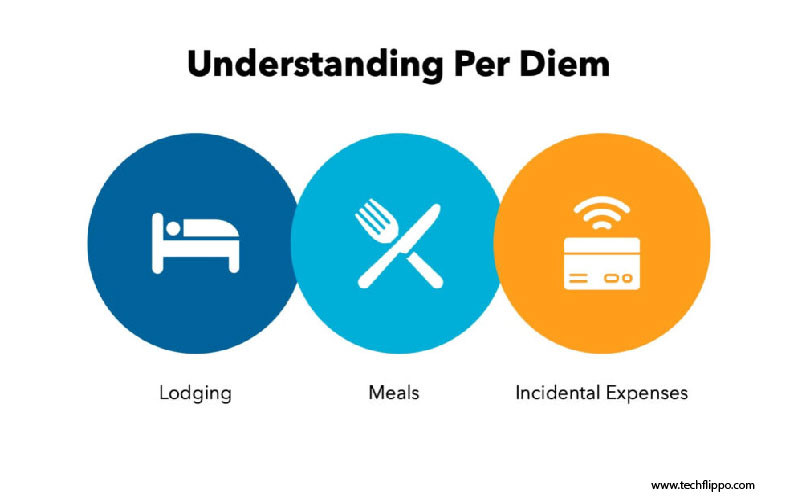The Ins and Outs of Per Diem: A Comprehensive Guide
When it comes to business travel, managing expenses can often feel like navigating a maze. Enter the concept of per diem—a handy tool designed to simplify how companies reimburse employees for their daily costs while traveling. But what exactly is per diem? How does it work, and why should you care? Whether you’re a seasoned traveler or new to the world of corporate trips, understanding the ins and outs of per diem can help you budget effectively and maximize your financial benefits on the road. Let’s dive into this comprehensive guide that unpacks everything from calculations to common misconceptions surrounding this essential travel allowance.

What is Included in Per Diem?
Per diem refers to daily allowances provided to employees for expenses incurred while traveling for work. These funds cover several key areas.
First and foremost, meals are a significant component. Employees can use this allowance for breakfast, lunch, and dinner during their travels.
Lodging is another crucial part of per diem. This ensures that workers have safe and comfortable accommodations without personal financial strain.
Transportation costs also fall under this umbrella. Whether it’s a taxi ride or public transportation fare, per diem helps manage these expenses efficiently.
Additionally, some companies may include incidental costs like tips or minor supplies. It offers flexibility in handling unexpected expenditures that can arise on the road.
Understanding what constitutes per diem empowers employees to utilize their allowances effectively while adhering to company policies.
Benefits of Using Per Diem
Using per diem offers several advantages for both employers and employees. For businesses, it simplifies expense reporting. Instead of collecting receipts from trips, companies can allocate a fixed amount for daily expenses.
Employees also benefit from this structure. With per diem, they have more freedom in how to spend their allowances. This flexibility allows them to choose dining options or accommodations that suit their preferences.
Another key advantage is tax efficiency. Per diem payments are often not subject to income tax as long as they fall within federal guidelines. This means employees can keep more of what they earn while traveling for work.
Additionally, per diem rates provide predictability in budgeting for travel costs. Companies know upfront what expenses will be incurred, making financial planning much easier and more accurate over time.
How to Calculate Per Diem
Calculating per diem can be straightforward once you understand the basics. Generally, it involves setting a daily allowance for expenses like meals and lodging while traveling for work.
Start by determining the location of your travel. Different cities or states may have varying rates based on local costs. The General Services Administration (GSA) provides guidelines that help establish these amounts.
Next, identify what expenses are covered under your per diem policy. Some employers allow full coverage for meals, lodging, and incidentals, while others might limit this scope.
Multiply the daily rate by the number of days you’ll be away from home. Don’t forget to include any partial days if necessary—this means calculating accurately when you depart and return.
Keep all receipts and documentation handy as some companies require proof of spending to validate your claims. This ensures transparency and accountability in your expense reporting process.
Tips for Maximizing Per Diem Benefits
To maximize your per diem benefits, start by thoroughly understanding the guidelines set by your employer. Familiarize yourself with eligible expenses and limits to avoid confusion.
Track all of your receipts meticulously. Even if some costs might be covered under per diem allowances, having documentation can help clarify any discrepancies later on.
Plan meals strategically. Instead of dining at expensive restaurants each night, explore affordable local eateries or grocery options that allow you to save money while still enjoying local flavors.
Additionally, consider combining business trips whenever possible. This approach not only reduces travel fatigue but may also increase your per diem allowance due to longer stays in specific locations.
Engage with colleagues who have experience navigating per diem policies. They can offer valuable tips and share insights that can enhance your understanding and use of this benefit effectively.

Common Misconceptions About Per Diem
Many people have misconceptions about per diem that can lead to confusion. One common myth is that per diem covers all travel expenses. In reality, it typically only includes meals and incidentals.
Another misunderstanding is that employees can pocket any unused funds. Most companies expect the allowance to be spent on business-related costs, not personal ones.
Some believe that per diem rates are universally fixed. However, these rates vary by location and government guidelines, reflecting local living costs.
A misconception exists around eligibility. It’s not just for full-time employees; freelancers and contractors may also qualify under certain conditions. Understanding these nuances helps clarify how per diem works in practice.
Alternatives to Per Diem
When per diem doesn’t fit the bill, other options are available. One popular alternative is reimbursement for actual expenses. Employees can save receipts and submit them for specific costs incurred while traveling.
Another approach is to provide a fixed allowance that isn’t strictly tied to daily rates. This method offers flexibility, allowing employees to decide how best to allocate their funds.
Some companies opt for travel credit cards, which simplify expense tracking. These cards can be preloaded with funds or linked directly to corporate accounts.
Additionally, implementing an expense management software could streamline submissions and approvals. It allows employees more control over their finances while ensuring accountability on company spending policies.
Consider meal stipends based on location-specific dining costs. This targeted strategy addresses varying price points without the complications of daily calculations.
Conclusion
Navigating the ins and outs of per diem can seem complex at first, but understanding its structure and benefits is crucial for both employees and employers. With a clear grasp of what per diem entails, you can reap its financial rewards while ensuring compliance with company policies.
Equipped with the right calculations and tips, maximizing your per diem allowance becomes an achievable goal. This knowledge not only helps in managing expenses during travel but also enhances overall job satisfaction. By dispelling common misconceptions, you pave the way for more informed decisions regarding expense management.
If per diem doesn’t fit your needs or circumstances, exploring alternatives can provide additional flexibility. Whether you’re traveling for business or evaluating expense strategies within your organization, having a comprehensive understanding will empower you to make better choices moving forward. Embracing these insights into the world of per diem enables efficient planning and provides peace of mind on future trips.